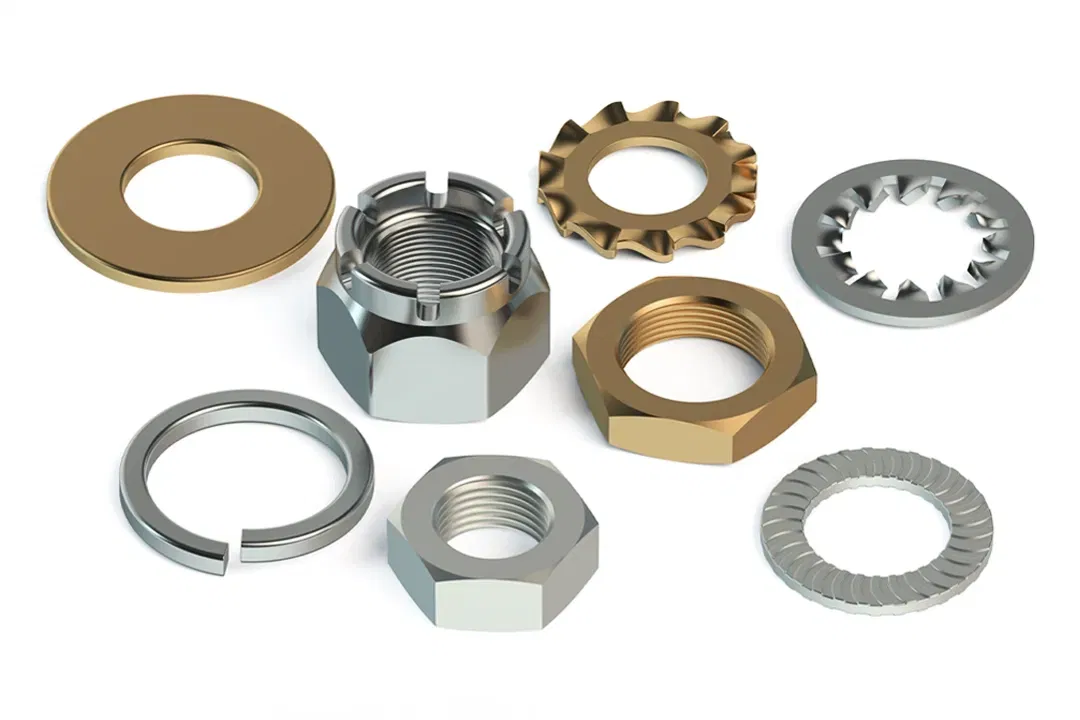
How to use your thread knowledge to secure screws
Have you ever found a stray screw on the carpet in your home that you couldn't identify? And then the bench suddenly wobbles at dinner, you start looking for the cause and realize - that's where the screw came from! But how did it get out of the thread and onto the carpet? Do you have an upholstery ghost or has a burglar who is up to mischief played a trick on you?
If a screw comes loose by itself as if by magic, then in the vast majority of cases this is fortunately for very earthly reasons that can be explained perfectly by the laws of physics. Of course, this doesn't help you with the corner bench at first. In order to understand what caused the screw to loosen and how you can perhaps prevent this from happening in the future, today we will be looking at the subject of screw locking. And that's pretty important. While unstable furniture can certainly be a nuisance, there are also areas where threadlockers actually prevent serious accidents and major property damage.
What the screw lock has to do with the thread
Under normal circumstances, the self-locking of a screw should make screw locking unnecessary. To understand the concept of self-locking, imagine a body on an inclined plane. If the angle between the floor and the plane is very small, the body will stay in place and not slide down by itself. The greater the angle or the more inclined the plane, the easier it is for the body to slip until the resistance caused by the friction is no longer sufficient.
In principle, a thread on a screw is nothing more than an inclined plane wound around an axis. In this case, self-locking means that the screw does not move without external force and therefore no screw locking is required. Threads with little or no self-locking are often movement threads where, in contrast to fastening threads, it is expressly desired that a nut can move easily or even completely by itself along a spindle.
But even a screw connection with good self-locking properties can be exposed to conditions that make screw locking essential. Vibrations or alternating loads can lead to loosening or loosening of the connection, as in the case of your seat with the lost screw. However, corrosion or changes to the material can also cause screws to loosen without any action on your part, despite self-locking. And then, depending on the area of application, it may make sense to consider a screw locking device.
Screw locking due to changes to the thread
If the thread with its inclined plane is partly responsible for the loosening of the screw, then perhaps the solution to the problem could also be found here, right? In fact, there are several methods of screw locking that are directly related to the thread.
With thread locking, the play between the internal and external thread, which allows the screw to be screwed in smoothly, is reduced at a specific point. To do this, some of the threads on the screw are shifted in the direction of screwing in, which causes the screw to jam and can no longer loosen by itself. A somewhat more aggressive variant of this principle is to damage the thread in a targeted manner, for example by hitting it with a center punch. This is also an effective method of securing screws, but also leads to permanent deformation and is therefore not suitable for every application.
Wedge lock washers are also directly related to the thread, as the wedge surfaces on the inside of the washers only effectively prevent loosening if their pitch exceeds the thread pitch. In this case, the washers will jam if the screw moves in the opposite direction to the screw-in direction, making automatic loosening impossible.
Other types of screw locking
There are many other ways of securing screws, some of which make use of very different principles. The use of adhesive or a lock nut, for example, is obvious and easy to implement if the screw connection allows it. Elements such as hooks and teeth, which drill into the material and hold the screw in place, have also proven their worth.
The type of threadlocker used also depends on the type of locking required. In some cases, for example, a captive lock is sufficient, which does not prevent a screw from unscrewing, but prevents it from unscrewing completely. In other cases, however, a complete anti-rotation lock must be found.
When do you need an additional screw lock?
But what about your seat? Should you apply a screw lock to the screw to prevent it from ending up on your carpet again at some point? In such a case, it is probably sufficient to tighten the screw once in a while. The potential damage is minimal and the effort involved is manageable. In addition, you must always bear in mind that many screw locking measures are irreversible. If you glue your screw in the thread, the bench will hold, but you may encounter problems the next time you want to dismantle your furniture for transportation.
But of course there are also areas where a loose screw can have massive consequences. Cars are a prime example, as two factors come together here. On the one hand, screw connections are exposed to vibrations and heavy loads, and on the other hand, human lives are at stake. If you are considering using a threadlocker, you should therefore consider - how likely is it to loosen and how serious would the consequences of a loosened screw be?
Before a screw can loosen, it first needs a holding thread and here at BAER we can provide you with expert help. You will find high-quality threading tools in our online store and our friendly customer service team will be happy to assist you with your projects.
